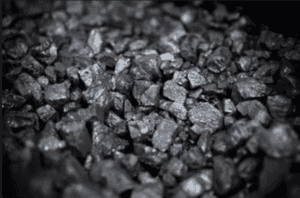 Iron, like salt, has been used for many thousands of years as a potent tool in the practices of energetic magic. Iron is one of the most abundant metals in our planet, and is also a really great metal for making into tools. It’s tough, hard, ductile and with a high melting point that makes it ideal for situations in which you might need a tool to work under extremely hot conditions. It’s also one of only three ferromagnetic metals (along with nickel and cobalt), making it an essential part of most magnets and compasses.
Iron, like salt, has been used for many thousands of years as a potent tool in the practices of energetic magic. Iron is one of the most abundant metals in our planet, and is also a really great metal for making into tools. It’s tough, hard, ductile and with a high melting point that makes it ideal for situations in which you might need a tool to work under extremely hot conditions. It’s also one of only three ferromagnetic metals (along with nickel and cobalt), making it an essential part of most magnets and compasses.
In astrophysics, iron is extremely important in the life cycle of stars. Iron is one of the most atomically stable substances in the universe, and it’s also unique because it’s the first element in the periodic table to require more energy to MAKE it than it gives out from atomic fusion. This is important, because when a star gets older and fuses hydrogen to make helium, helium to make beryllium and all the rest, once it starts fusing atoms to make iron, the star begins to die. So, iron is an element that signals the death of stars, and any element that weighs MORE than iron (atomically speaking) can only be made in supernovas – that is, the explosion that takes place when a really BIG star dies.
In biology, iron is one of the most important elements in mammalian, reptilian and avian blood, because it’s the element that we use in the chemical hemoglobin. This is the chemical in our blood cells that binds to oxygen and keeps us alive. Crustaceans like lobsters don’t use iron – they use copper, and instead make hemocyanin, which makes their blood blue! However, just like in stars, iron can mean death for humans as well. If we overdose on iron, we suffer from iron heavy metal poisoning; when we get crushed by a heavy object we can suffer a disease called traumatic rhabdomyolysis or Crush Syndrome, caused by vast amounts of myoglobin (another iron-based compound, found in muscles, which gives them extra oxygen to use) entering our kidneys and killing them, and as a result killing us.
Iron in science is an element of life, death, and of many points in between.
Magical properties of Iron
- Iron is stable. Iron’s stability, both atomically and magically, makes it a fantastic magical conductor, and also means that magic doesn’t seem to affect iron very much. Enchantments on iron are never as strong as on other metals, and even the best witches will have difficulty making an enchantment or other spell anchor properly. However, this has the advantage that iron doesn’t pick up negative magic from background sources, and it’s extremely unlikely that there will be issues with ritual or altar tools made from iron. Keeping your magical supplies inside an iron or steel box, or a box that’s been nailed together with iron nails, will prevent them from leaking out and attracting spirits that might cause harm.
- Iron is protective. Along with silver and a few other little bits and bobs, negative spirits and vrill folk cannot touch iron lest it burn them and cause them pain. Additionally, negative magics targeted at someone wearing an iron pendant will be attracted into the pendant and then dispelled. This makes it an ideal protective charm for everyday carry or everyday wear.
This is why horseshoes are considered lucky– back in Medieval times, when protection against negative spirits and magic was much more widely practiced, poor families would often be unable to afford much iron. However, a horseshoe is made of iron, and comes with holes already cast into it, which allow you to nail one over your door easily, which keeps out harmful spirits, magic, and vrill (I do not subscribe to evil Fae. Evil Fae are actually Vrill masquerading as Fae and giving true fae a bad name. Tell Vrill to fuck off), who might seek to hurt you or your family.
- Iron is inconspicuous. Anyone can carry an iron nail after all, and a little piece of iron wrought and twisted into a small pendant is far from a traditional witch’s item. Those secret witches who perhaps do not live with accepting families or within an accepting community or country can find great solace in the use of iron as a protective charm.
- Iron is cheap. Iron nails, iron rods and iron knifes are pretty easy to get hold of and relatively quite cheap. They’re versatile and not especially likely to draw attention to you – after all, nobody’s likely to question why someone has a couple of iron nails twisted into a pendant, and if they do question it, why it’s just an artistic display! And of course, easy to replace with $5 worth of string, iron and a hammer.
- Iron is ancient. Iron is one of the oldest protective charms out there, right up with salt and sage. It’s been used for literally thousands of years to protect people against everything from wolves to armies to poltergeists. That’s a pretty impressive history!
- Iron is practical! The best cookware is often cast iron and it’s very easy to clean. Iron knifes are sharper and cut cleaner than almost anything except obsidian, and high-carbon steel (an alloy of iron and carbon) is the best cutting edge known in bushcrafting circles, where all the best knives are made from it.


